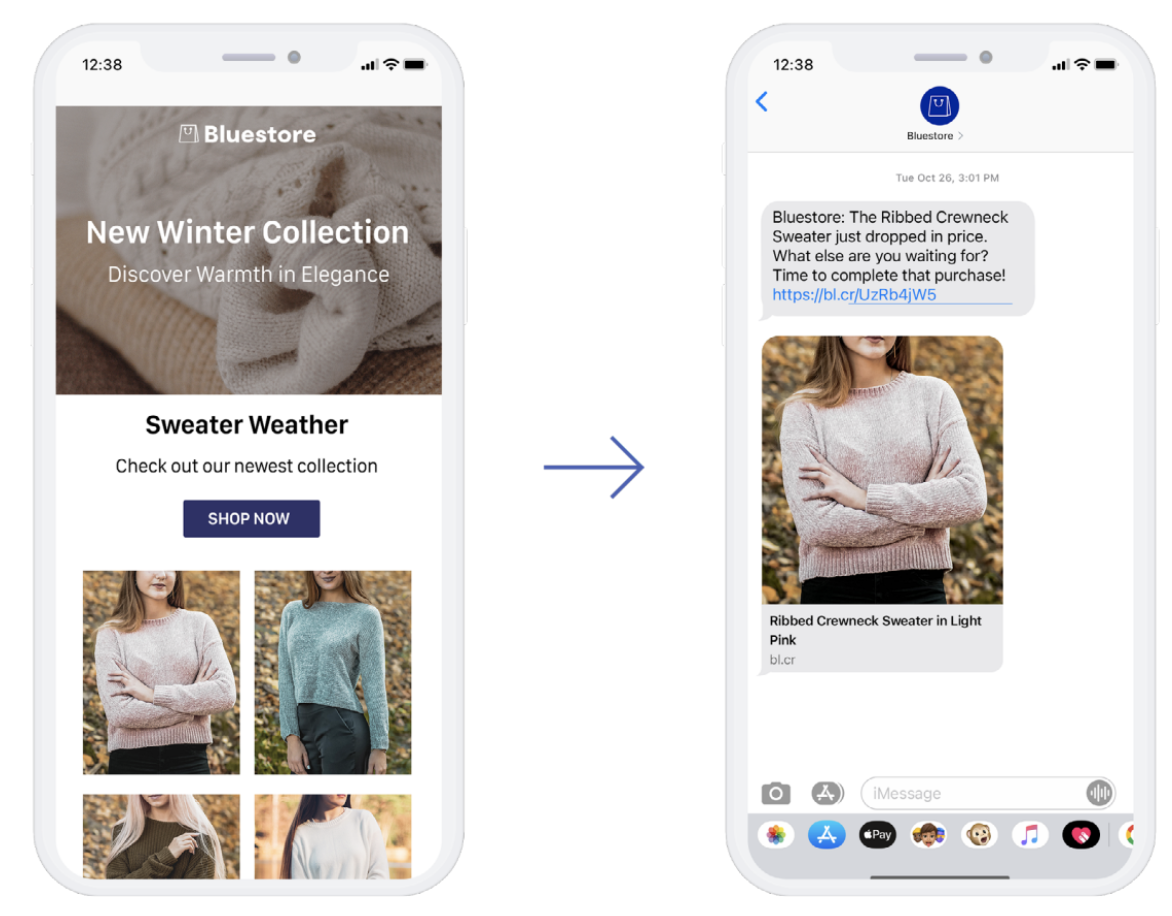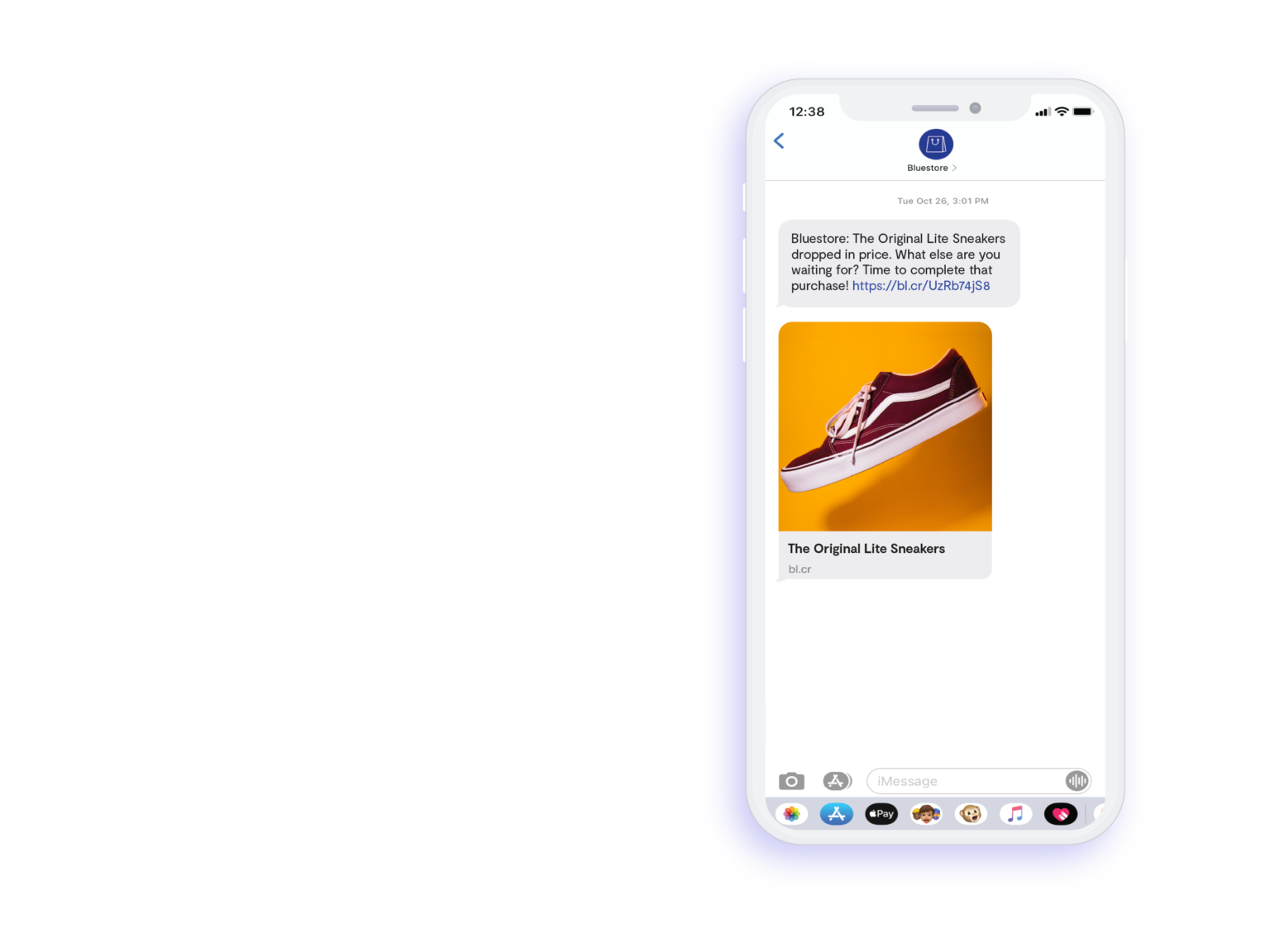
How to Become Your Shopper’s Next Best Friend with Personalized Texting
You’re just one text away from becoming your shopper’s next best friend.
Think about it. Every brand’s goal this year is to be shopper-first. That means getting closer to shoppers than ever before to give them those end-to-end personal, custom experiences. And you can’t get much closer than their phones. You don’t email your best friend. You text them!
Well, it’s time that you take that next step with each of your shoppers — from casual acquaintances to best friends. In fact, it’s time for you to get to know your shoppers so well, you’re finishing their sandwiches.
And it’s about much more than simply capturing your shoppers’ phone numbers and texting them any old message or marketing blast. Shopper expectations are high — and if you miss the mark, you might get left on read.
Whether you already have a mobile marketing plan in place or you’re just starting out, there are a few things you’re going to need before you reach BFF status with your shoppers.
3 Core elements every text message marketing program should have
1. Personalization
Shoppers want text messages that sound like any other text message they get — personalized. Personalization is becoming more of a non-negotiable for brands on channels like email, but unless the experience extends seamlessly to text, you’ll miss the mark. Your mobile-friendly shoppers should get the same amount of curation and care in their phones as they do in their inbox, from the products they want to their size to the channel they want to hear from you on.
2. Intuitive workflows
Mobile should be as friendly to retail marketers as it is to shoppers. Whether accessed by one platform that manages all of your channels or seamlessly integrated into your existing martech stack, you need to have easy access to data and a simple campaign management system so you’re spending more time being proactive and understanding insights and less time setting up disparate campaigns with manual segmentation, slow setups and clunky exports and imports.
3. Cross-channel coordination
Having a unified system for your channels is critical for streamlining information, understanding your shopper and deploying multi-touch campaigns that automate across channels. There are three key reasons why you need cross-channel coordination — full shopper profiles, channel preference and multitouch experiences. Each piece fits into the personalized journey. The more you know about your shoppers, the better you can understand the channels they’re most likely to engage and convert on. You can also unlock multitouch journeys that span channels to meet your shoppers wherever they are.

4 Ways to get personal with shoppers through text
Once you get your shoppers digits (strategies for that here), you can start to get personal with text. Tether your shopper’s phone number with identifiers like loyalty ID and email to get that full picture of who your shopper is. With data that captures the complete view of your shopper, all the details of your product catalog that they love and the actions they’re taking across channels, supercharge your texts.
With the right mobile strategy, brands can activate that data to put the right messages and recommendations in front of every individual shopper — from knowing their favorite styles to predicting what they’ll want to buy next. Here are a few tips to get you started:
1. OOTD
Your shopper’s #OOTD is important, so you need to help your shoppers complete the look. With intelligent recommendations that consider past purchase, style, product preferences and category preferences, you can text each of your shoppers 1:1 personalized product recommendations tailored to them. For your shoppers, it’s like having the power of a shopping buddy right at their fingertips.
2. ICYMI
Don’t let your shoppers miss the best of your product. By using the power of your product catalog with what you know about your shoppers, you can send texts that don’t miss a beat. Your text message marketing should give your shoppers up-to-the-minute updates on the products they love with automatic messages based on product signals like price drops, new arrivals, back in stock or best sellers. Think personalized merchandising triggers sent straight to a shopper’s phone.

3. NBD
Protecting your bottom line? No big deal. When you’re texting your shoppers, make sure you only offer discounts to shoppers that are more likely to convert with a discount. If they buy full price? Send them personalized product recommendations or a text about all your new arrivals. By being selective about who you’re texting discount codes to, you can control sales and protect revenue.
4. TMI
As much as your shoppers want to hear from you on their cell, make sure you don’t blow up their phone. Too much information that’s not relevant to your shopper will cause them to put pause on your relationship — and cause you to waste your marketing dollars. By only sending personalized text messages at the right time (and knowing on which channel shoppers are most likely to convert) you can save yourself an opt-out and give shoppers the experience they’re looking for. That means if a shopper doesn’t want you to text them … you don’t.
Just FYI: You can get more personalization strategies by downloading The Retailer Marketer’s Guide to Personalized Texting
This is the beginning of a beautiful friendship
Making the right investments in your mobile strategy is critical in building and scaling your mobile program to drive profitability. By starting with the right foundations or implementing them now, you can be sure that you’re intelligently driving incremental revenue at scale.
Because now? Getting close to shoppers is more important than ever before. So why not take your relationship with shoppers to the next level with intelligence-driven, end-to-end personalization on mobile? To get all the strategies and tips, download The Retail Marketer’s Guide to Personalized Texting.






